This is part 3 of the series “Can NSW replace Liddell?”
The 16th of March 2023 was the 2nd hottest day in a late summer in NSW.
 Fig 1: Temperatures in Sydney in March 2023
Fig 1: Temperatures in Sydney in March 2023
At 5:31 pm the Australian Energy Market Operator AEMO had to issue a RERT direction (market notice 106711 16/3/2023 5:31 pm), the last procedural step before load shedding. RERT=Reliability and Emergency Reserve Trader.
 Fig 2: Power generation in NSW 15-17 Mar 2023
Fig 2: Power generation in NSW 15-17 Mar 2023
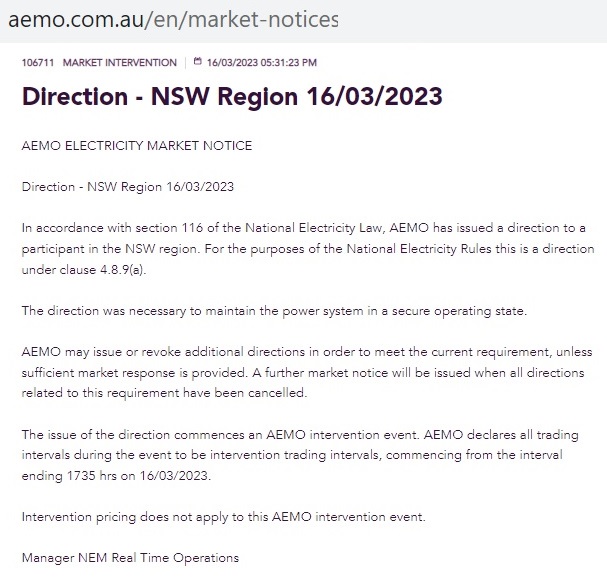 Fig 3: AEMO direction 106711 to supply power
Fig 3: AEMO direction 106711 to supply power
https://nemweb.com.au/Reports/Current/Market_Notice/NEMITWEB1_MKTNOTICE_20230316.R106711
The following table shows the market notices which appeared in a short period of time in the late afternoon-early evening:
|
AEMO market notices 16 Mar 2023 for New South Wales |
|||||
| Notice number | Time of notice | Notice | For period | Reserve required (MW) |
Reserve available (MW) |
| 106700 | 4:34 pm | Actual Lack Of Reserve Level 1 (LOR1) | 16:00-19:00 | 1,385 | 901 |
| 106706 | 5:03 pm | Forecast Lack Of Reserve Level 2 (LOR2) | 18:00-18:30 | 700 | 682 |
| 106708 | 5:07 pm | INTENTION TO COMMENCE RERT CONTRACT NEGOTIATIONS | 18:00-19:00 | ||
| 106713 | 5:23 pm | INTENTION TO IMPLEMENT an AEMO INTERVENTION EVENT WITH RERT | 18:00-19:00 | ||
| 106711 | 5:31 pm | Direction. AEMO has issued a direction to a participant in the NSW region | From 17:35 | ||
| 106716 | 5:54 pm | Actual Lack Of Reserve Level (LOR2) | 17:50-18:30 | 700 | 372 |
| 106724 | 6:38 pm | Cancellation – AEMO Intervention Event – trading intervals | From 18:35 | ||
| 106726 | 6:57 pm | pm Cancellation of Actual (LOR2) condition | From 18:55 | ||
| RERT=Reliability and Emergency Reserve Trader | |||||
Only 372 MW away from load shedding even after the direction, for around 1 hr. How did we come to this condition?
Coal generation down by 1,500 MW
Vales Point VP5 said good bye at midnight
 Fig 4: Vales Point unit 5 generated 450 MW before being turned off
Fig 4: Vales Point unit 5 generated 450 MW before being turned off
It is actually planned maintenance.
 Fig 5: VP5 planned maintenance until 9 May 2023
Fig 5: VP5 planned maintenance until 9 May 2023
http://www.nemweb.com.au/REPORTS/CURRENT/MTPASA_DUIDAvailability/
What an irony. It is the very coal fired power plant which Czech brown coal baron was allowed to buy (FIRB approval)
7/10/2022
Sale of Vales Point: How will Czech brown coal baron Pavel Tykac with
business registered in Liechtenstein impact on NSW coal and energy markets?
http://crudeoilpeak.info/sale-of-vales-point-how-will-czech-brown-coal-baron-pavel-tykac-with-business-registered-in-liechtenstein-impact-on-nsw-coal-and-energy-markets
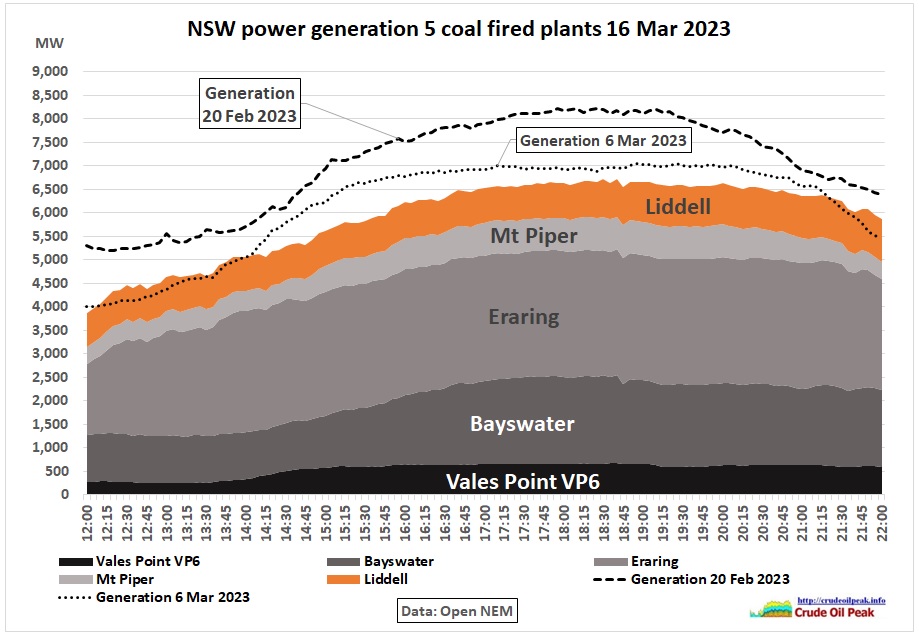 Fig 6: Coal powered generation afternoon 16 Mar 2023 max 6,700 MW
Fig 6: Coal powered generation afternoon 16 Mar 2023 max 6,700 MW
So generation from coal was down by 1,500 MW during peak hrs. The 12 units in operation were utilised at 94%
Gas power generation hit maximum
 Fig 7: Output of 4 gas peakers was 94% of capacity
Fig 7: Output of 4 gas peakers was 94% of capacity
Wind power generation variable
 Fig 8: Generation from windfarms
Fig 8: Generation from windfarms
Afternoon generation was declining similar to what happened on 6 Mar, but on a higher level of around 900 MW later in the evening.
Just as the winds started to slow down there was a sudden drop of output at 6 windfarms over 15 min shortly before 5 pm, followed by a gradual resumption over 1 hr. Gullen Range, Cullerin Range and Crookwell 2 are in the same area suggesting there was a local problem.
Grass fire at Curraweela
https://www.abc.net.au/news/2023-03-16/taralga-bushfire-emergency-level-crookwell-southern-tablelands/102105704
with AEMO market notice 106705 advising that the Mt Piper to Bannaby 5A6 and 5A7 500 kV lines were affected
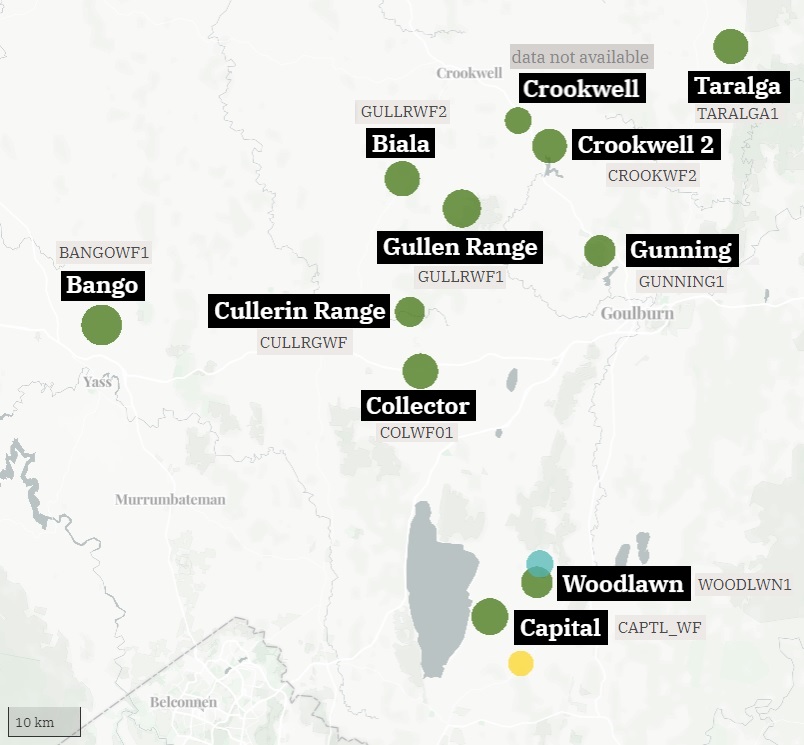 Fig 9: 11 windfarm locations in the Southern Highlands NSW
Fig 9: 11 windfarm locations in the Southern Highlands NSW
But there were simultaneous output drops in windfarms elsewhere (Singleton near Broken Hill, Crudine Ridge south of Mudgee and Boco Rock south of Cooma). It is not clear why there was this coincidence.
Hydro power reached 93% of capacity
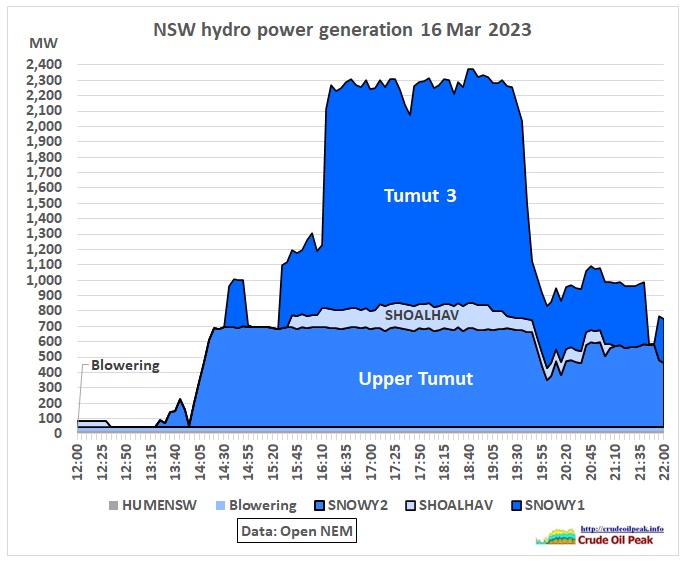 Fig 10: Both Upper Tumut and Tumut 3 increased their hours of operation
Fig 10: Both Upper Tumut and Tumut 3 increased their hours of operation
Peak hydro generation reached 2,300 MW, 100-200 MW higher than on 6 March. Total energy provided over 10 hrs was 12,400 MWh, 50% more than on 6 March.
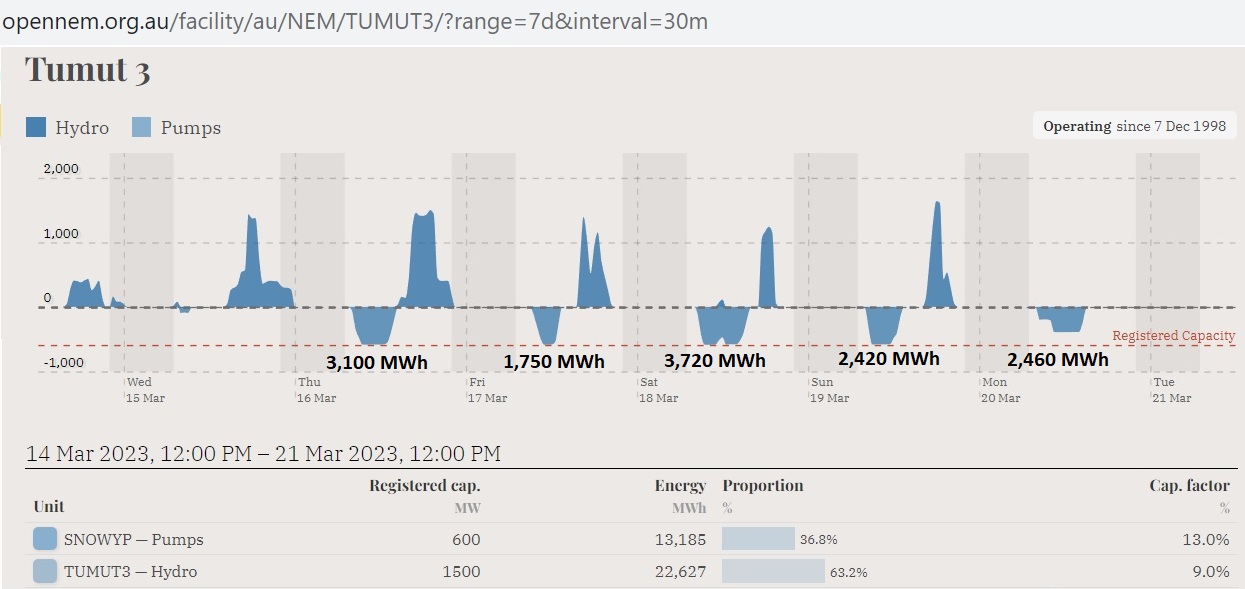 Fig 11: Operation of Snowy pumps
Fig 11: Operation of Snowy pumps
On 16 Mar 2023 pumps had provided 3,103/6,288 = 49.5% of the generation delivered on the same day. Multiply by 80% for friction losses.
Power imports
 Fig 12: NSW imports power from both Queensland and Victoria
Fig 12: NSW imports power from both Queensland and Victoria
In the above graph, imports are positive, exports are negative. Imports from Queensland in the afternoon were limited to 2 short periods and hardly more than 200 MW while usually these imports are between 400 MW and 1,000 MW over the whole day.
 Fig 13: Queensland power generation maxed out on 16 Mar 2023
Fig 13: Queensland power generation maxed out on 16 Mar 2023
Coal generation was limited to 6,300 MW due to the Callide C power plant still under repair
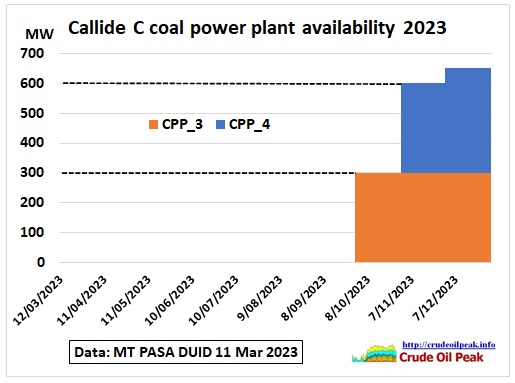 Fig 14: Callide C may come back only end of 2023
Fig 14: Callide C may come back only end of 2023
With gas providing 2,500 MW close to capacity (CCGT 96%, OCGT 90%) even Diesel up to 250 MW had to be used.
Queensland had its own lack of reserve level 2, announced by AEMO notice 106719 for the period starting at 17:30 (560 MW required, 531 MW available). It lasted until 18:55.
Fig 12 shows that Queensland can only export during sunshine hours as already mentioned in this post:
30 Jan 2023
When the sun sets in Queensland, energy guzzler NSW is on its own
http://crudeoilpeak.info/when-the-sun-sets-in-queensland-energy-guzzler-nsw-is-on-its-own
In Victoria, the situation was completely different.
 Fig 15: Victoria’s power generation 16-18 Mar 2023
Fig 15: Victoria’s power generation 16-18 Mar 2023
There was almost 2,700 MW of wind power at the critical time of 6 pm. This allowed exports of 580 MW which grew to 1,500 MW at 10 pm, out of which, however, 500 MW went to South Australia where wind power had declined by 250 MW and died down completely overnight.
Price spikes
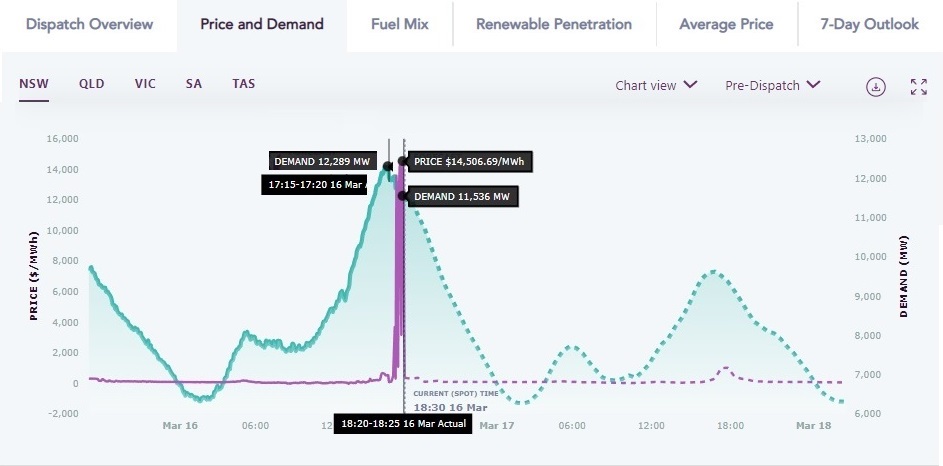 Fig 16: Price spike of $14,500/MWh in NSW
Fig 16: Price spike of $14,500/MWh in NSW
The price spike(s) lasted for 1 hr between 17:45 and 18:50 hrs.
Summary and conclusion
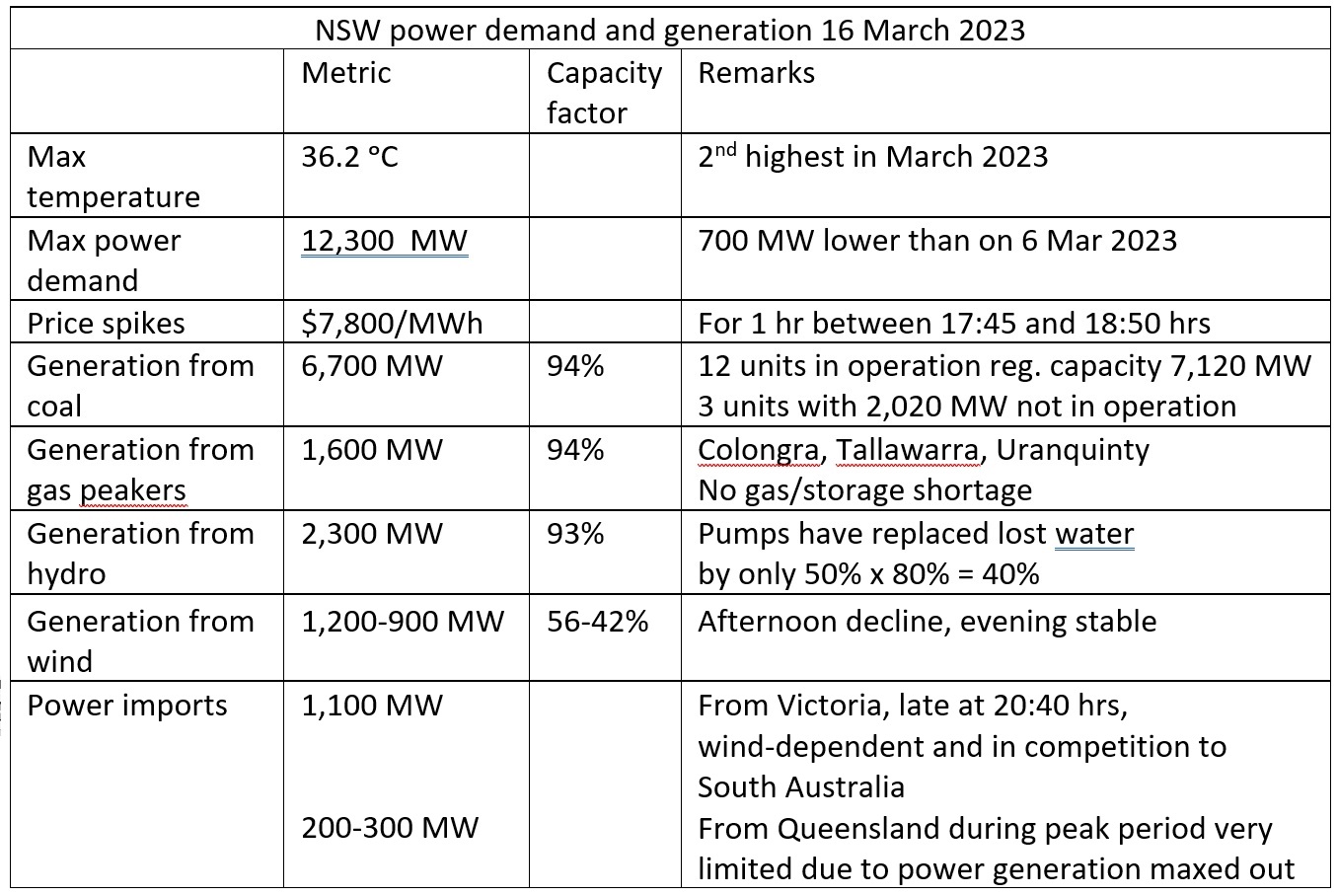
That aging coal plants require more maintenance is a no-brainer. Therefore, it is worthwhile to monitor NEMWEB’s list of plant availability to avoid surprises. And as these plants are withdrawn from service the power supply system becomes more vulnerable to ever changing weather events which are quite different from State to State. Limited capacities of pumped hydro and gas peakers impact on the availability of power exports under adverse conditions. Energy guzzling NSW is in an almost continuous state of energy generation deficit which will worsen when Liddell is closing. Power imports are taken for granted just like Australia’s fuel imports. Government departments, Councils, media, major companies and developers do not seem to be aware of this situation, don’t care, ignore it or assume technology will solve any problem in time. This complacency will have financial consequences similar to what we saw with the collapse of road tunnels (Lane Cove, Clem 7, Airport Link) when the first phase of peak oil was ignored.
The latest example of energy illiteracy in Western Sydney is this proposal:
Related posts:
13/3/2023
Lack of reserve on hot day in NSW as Liddell power plant is scheduled to close
http://crudeoilpeak.info/lack-of-reserve-on-hot-day-in-nsw-as-liddell-power-plant-is-scheduled-to-close
8 Mar 2023
Can NSW replace Liddell? (part 1)
http://crudeoilpeak.info/can-nsw-replace-liddell-part-1
